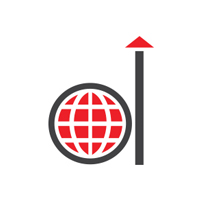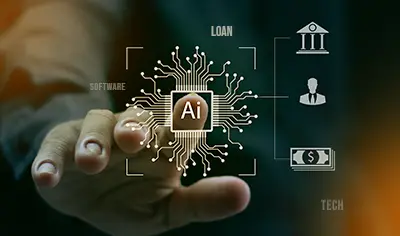Microfinancing plays a pivotal role in facilitating financial inclusion and helping individuals and small businesses with urgent requirements of funds. Nevertheless, with the rise in demand for loans and related paperwork, the process of managing them can be overwhelming. To overcome this challenge, microfinance institutions make use of loan management software (LMS), an advanced technological solution that quickens the loan origination and lifecycle process, boosts accuracy, and adds flexibility. By streamlining operations and empowering small businesses, the software is revolutionizing the landscape of microfinance. Now, let’s dig deeper to explore the ways through which LMS is transforming the microfinance landscape. This post also delves into the key features of loan management software and the challenges to consider during the adoption.

4 Ways in Which Loan Management Software Has Transformed the Microfinance Landscape
The microfinance sector has seen tremendous growth, providing financial services to small-scale enterprises excluded from traditional banking. The global microlending market is expected to reach USD 350.25 billion by 2030, growing at a CAGR of 13.7% between 2022 and 2030, according to a report by Straits Research.
By extending financial services to small businesses and underserved communities, microfinance institutions (MFIs) play an important role in promoting economic development and poverty alleviation. Acknowledging the requirement for innovation, the introduction of loan management software for small business has transformed the landscape of microfinance, building customer-centric lending operations, and bringing in a new period of efficiency, transparency, and accessibility.
1. Streamlining Lending Processes
One of the key benefits of loan or lending management or loan processing software is its ability to streamline the complete loan lifecycle, from application to repayment. By automating tasks such as risk assessment, credit scoring, and document verification, LMS platforms allow MFIs to expedite the cycle of loan processing, greatly reducing turnaround times and improving customer satisfaction. With the help of features like real-time status updates and online application portals, borrowers can navigate the process of lending with ease, removing the bureaucratic issues that often hinder the growth of small businesses.
2. Improving Transparency and Credibility
Since trust and accountability are important for fostering sustainable relationships between MFIs and their clients, the significance of transparency cannot be overlooked in microfinance. Loan management software for small business plays a key role in improving transparency and accountability throughout the process of lending. By equipping businesses with a centralized platform for data management and reporting, LMS allows MFIs to track loan disbursements, monitor repayment schedules, and create comprehensive analytics on the performance of the portfolio. This type of visibility instills confidence in borrowers and also enables microfinance institutions to make informed decisions and optimize their lending strategies for the best results.
3. Effective Risk Mitigation
Given the challenges in providing microfinance to small businesses and low-income borrowers, risk management is a critical component of the industry. Loan processing software helps mitigate risks efficiently using predictive modeling and advanced analytics. By analyzing huge volumes of data, including financial indicators, market trends, and credit history, the software can evaluate the creditworthiness of borrowers and spot potential default risks. This insight helps MFIs in implementing proactive measures such as loan restructuring, collateral requirements, or targeted interventions to reduce risks and protect their portfolios.
Streamline Lending with Damco’s Loans Neo–Loan Management Software
4. Encouraging Financial Inclusion
The foundation of microfinance is financial inclusion, the idea that everyone, irrespective of socio-economic status, needs to have access to affordable financial services. A loan management solution plays a key role in furthering this goal by extending the reach of MFIs to remote regions and marginalized communities. With the help of mobile-friendly interfaces and digital platforms, LMS empowers MFIs to reach clients in areas with restricted access to traditional banking services. This digital transformation helps increase the customer base of MFIs and also empowers small businesses to flourish in a marketplace that is changing rapidly.
Key Features of Loan Management Software
Deep dive to explore the key features of commercial loan processing software solutions that streamline the entire loan lifecycle from origination to repayment.
I. Automation of Loan Processes
Automation is a key feature of micro lending management software. It reduces manual errors and speeds up loan approvals. This feature also simplifies tasks like application processing, credit scoring, and loan decisioning.
Key Aspects
- Automates data extraction from documents
- Instant credit scoring and reporting
- Real-time loan approval or decline notifications
- Automated generation of loan agreements
- Streamlines loan servicing tasks
- Reduces manual errors and processing time
II. Compliance and Security
Commercial loan processing software helps lenders follow financial regulations. It also protects sensitive borrower data through encryption and access controls.
Key Aspects
- Ensures compliance with financial laws
- Encrypts borrower data for security
- Uses multi-factor authentication for access
- Maintains a full audit trail of transactions
- Supports KYC/AML verification
- Offers configurable data retention policies
III. Centralized Data Management
Centralized data management provides a holistic view of each borrower. This helps in making smart decisions and enhancing data analysis for risk review.
Key Aspects
- Stores borrower profiles and credit history
- Manages loan agreements and repayment records
- Provides real-time access to borrower data
- Enhances data analysis for risk assessment
- Facilitates easy access for customer service
- Supports data integration from public sources
IV. Integration with Third-Party Services
Integration with third-party services enhances the functionality of loan management software. It connects with accounting software, payment gateways, and credit bureaus to streamline operations and reduce manual data entry.
Key Aspects
- Integrates with accounting software for financial management
- Connects with payment gateways for efficient payments
- Links with credit bureaus for real-time credit scoring
- Supports API-enabled data exchange
- Facilitates integration with BI solutions for analytics
- Enhances collaboration with other financial systems
V. Borrower Self-Service Portal
A borrower self-service portal improves the lending experience by allowing borrowers to manage their loans.
Key Aspects
- Enables borrowers to submit loan applications online
- Allows document upload and management
- Provides real-time loan status updates
- Offers multiple payment options
- Includes instant messaging for support
- Enhances borrower engagement and satisfaction
The Ultimate Guide to Selecting a Next-Gen Loan Management Software
VI. Analytics and Reporting
Analytics tools aid lenders in tracking loan performance. They offer insights into loan origination, repayment success, and portfolio risks.
Key Aspects
- Tracks loan origination metrics and approval rates
- Analyzes repayment success and debt collection metrics
- Provides real-time portfolio performance insights
- Offers customizable reporting templates
- Supports forecasting of loan demand and profitability
- Enhances risk management with data-driven insights
VII. Credit Review and Risk Control
Effective credit assessment and risk management are vital components of micro lending management software. These features use advanced analytics to evaluate borrower creditworthiness and predict repayment success.
Key Aspects
- Conducts credit assessments using financial data
- Predicts repayment success based on credit history
- Analyzes borrower behavior for risk assessment
- Provides real-time credit scoring updates
- Offers AI-powered loan decisioning
- Enhances risk management with data-driven insights
VIII. Loan Portfolio Management
Loan portfolio management involves creating custom loan structures and monitoring portfolio performance.
Key Aspects
- Creates custom loan portfolio structures
- Provides real-time portfolio performance insights
- Analyzes portfolio risks based on credit data
- Calculates essential lending KPIs
- Offers intelligent recommendations on portfolio limits
- Enhances risk management with AI-driven analysis
IX. UX and Accessibility
A simple interface is crucial for both lenders and borrowers. Loan management software for small business should offer fluid navigation and easy access to features.
Key Aspects
- Offers intuitive navigation for lenders
- Provides real-time updates for borrowers
- Enhances accessibility across different devices
- Supports mobile optimization for remote access
- Includes responsive design for consistent user experience
- Facilitates easy communication through instant messaging
X. Scalability
Scalability lets lenders easily expand their operations without significant infrastructure investments. This ensures secure data storage and access from anywhere.
Key Aspects
- Enables easy scalability for growing businesses
- Provides secure cloud-based data storage
- Offers remote access to loan management tools
- Supports integration with cloud-based services
- Enhances collaboration across teams
- Reduces costs associated with infrastructure maintenance
Challenges to Consider
Despite the multiple advantages of micro loan management software for small business, its adoption is not without challenges. One of the primary obstacles is the initial investment needed for the implementation and customization of the LMS platform. This upfront cost could appear excessive for small microfinance institutions that have limited resources. Furthermore, moving from legacy systems to digital platforms can seem daunting, requiring planning, staff training, and change management efforts to guarantee seamless integration and adoption.
Privacy and data security are also potential concerns that deserve due consideration. Since LMS platforms handle sensitive financial information, powerful security measures need to be in place to prevent data breaches. With the help of micro loan management software for small businesses like Damco Solutions, MFIs can ensure that their sensitive financial data stays safe at all times. Microfinance institutions also need to adhere to strict regulatory requirements, such as GDPR and PCI DSS, to safeguard the integrity and confidentiality of customer data. Moreover, measures need to be taken to make sure that the personal information of borrowers is used in a responsible and ethical manner, following the best practices of privacy.
Summing Up
With technology continuing to evolve, the significance of loan management software in microfinance will only increase. By using the power of AI, digital analytics, and artificial intelligence, microfinance institutions can unravel new opportunities for small enterprises and promote equitable economic growth. MFIs, being proponents of financial inclusion, possess a unique opportunity to use LMS to empower marginalized communities and create a prosperous future for everyone.
In summary, micro loan management software can prove to be a game-changer in the microfinance sector, enabling small enterprises to grow in a fiercely competitive market. By streamlining loan processes, reducing risks, and improving transparency, LMS facilitates the growth and influence of MFIs, thereby promoting economic empowerment. The transformative power of LMS offers a ray of hope for small communities and businesses working towards a better future as we manage the complexities of an ever-evolving world.






